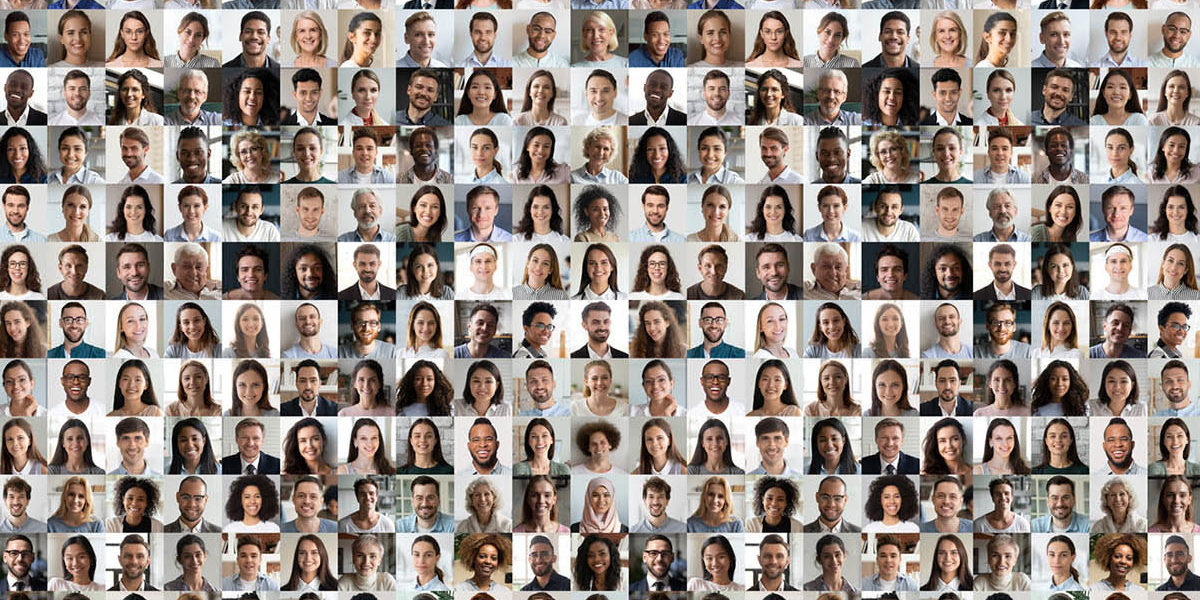Organisations are microcosms of society. They have a responsibility to create an environment that connects the world of work and the needs of society. Work and non-work are no longer separate. This has been the case for years, but the recent pandemic has really focused our attention on the cross-over between our work selves and our not-in-work selves. The pressures of homeworking, as well as having to go into work, have exposed challenges that have shown cracks in our inclusion strategies, with disadvantaged groups more likely to feel the pressure than others. Organisations, when they have strong inclusive practices, can impact on society for the better, having a role for innovation that can scale and positively influence the wider community. In short, organisations can be a force for good and can drive societal cultural change as well as practices within their own businesses.
A growing plethora of evidence shows that having a high performance, inclusive culture can support organisational goals and financial results through increased commitment from its people. Focusing on diversity has benefits of spreading your attraction and recruitment more widely but it is listening, understanding and acting on the multitude of barriers to inclusion which will activate a sustainable inclusive organisation, bringing strategic success and making a really significant difference to your employer value proposition.
Yet, where do you focus – diversity or inclusion? For many organisations, diversity reporting was the driver and door opener to start paying attention to the issues surrounding a lack of awareness and action regarding less represented communities. Many organisations have a legal responsibility now to report on protected characteristics. With evolving political movements, such as Black Lives Matter, stakeholders are now more interested in this area. But this reporting focuses largely on diversity, rather than inclusion. Moreover, publishing and communicating about a more diverse workforce without including the inclusion aspect can cause more harm than good. What can happen as a result is that you have a more diverse community in your workforce who are incredibly disengaged and disenfranchised. Therefore, if you desire sustainable change in equality and equity within your organisation, you will have to focus on a strategic plan around inclusion to make this a long-term successful activity (which, by the way, never should have an end).
The importance of inclusion
McKinsey’s research report in May 2020 entitled “Diversity wins: How inclusion matters” demonstrates that those organisations who focus successfully on diversity and inclusion saw performance outstripping others by 25% for gender diversity in the Exec and 36% for ethnic diversity in the Exec. And this differential is widening over time, rather than narrowing. However, when looking at sentiment, underlying issues start to show. While overall sentiment on diversity was 52% positive and 31% negative, sentiment on inclusion was markedly worse, at only 29% positive and 61% negative. In other words, organisations are focusing more on getting the diverse mix of its people right but the cultures within organisations are not keeping pace. Unless inclusion is enhanced in organisations, the lived experience of their diverse colleagues will continue to be problematic, likely causing disillusionment within diverse communities and higher workforce turnover. This, in itself, can cause more harm than good as it erodes trust, the bedrock of successful inclusion. Remember that diversity can be an accident, inclusion is not.
There are many barriers to inclusive progress. These can be perceptions and mindsets what lead us to make assumptions and categorise others before we openly listen to the experiences of our colleagues. Too often, individuals and the media promote a dichotomy of two mindsets around inclusion, especially those who are typically more represented or not classed as diverse. The narrative goes that there are two types of people: the “bigoted nay-sayer” and those who are “woke”. Our organisations are immersed in the external world of society and we cannot escape the current divisive trends that seem to be polarising debate in our communities. We have an opportunity to help our people understand this complex topic and get past the 280-character opinions of Twitter and other social conduits.
Our new report
Our new report, entitled “Inclusive Organisations” delves into the barriers to developing inclusion, looking at the myths of meritocracy and scarcity as well as the pitfalls of sheep-dip training around bias. We offer up a framework that organisations can use to start to create their own journey to build sustainable inclusive activities. We have also created our own Inclusion Hub as a resource for organisations to use for ideas. And, of course, we are always open to conversations with those who are interested to share their experiences with our expertise, to help them avoid making errors that others have done before, by utilising our diagnostics and maturity models. As we bounce back from the trauma of the pandemic, we can make more inclusive organisations for our people. Let’s start here and now.
To download a copy of our report: Inclusive Organisations: How inclusion leads to strategic success click here

